
Natya Kala Conference 2012
Text & pics: Lalitha Venkat
December 31, 2012
Titled Samahit, the Natya Kala Conference 2012 (Dec 26 - 31, 2012) was convened by Bharatanatyam dancer Priyadarsini Govind.
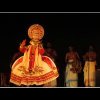
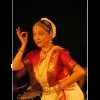
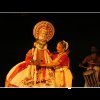
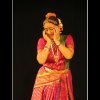
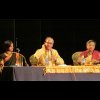


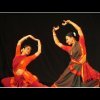
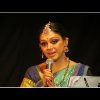
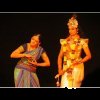
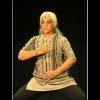

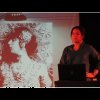
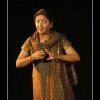
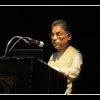
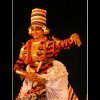
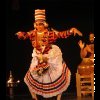
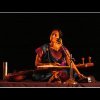
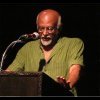
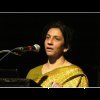
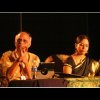
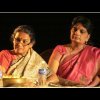
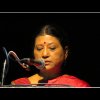
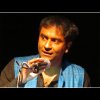

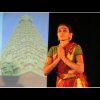
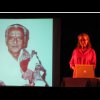
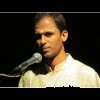
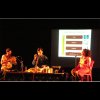
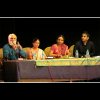
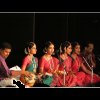
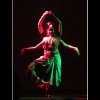
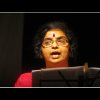
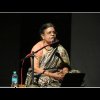

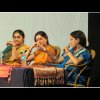
Quotes

Bharatanatyam is an abstraction of the world of emotions. Place it in an
illusionary frame and it extracts an abstraction of emotion. I don’t
think it’s a reflection of reality. …. Bharatanatyam has given much more
to Carnatic music than Carnatic music has given to Bharatanatyam….
It is a misconception that padavarnam has sahitya and taanavarnam has no
sahitya. Taanavarnam came from padavarnam and initially had sahitya.
Tanavarnam had a regimented structure. Later, taanavarnam lost its
sahitya. The padavarnam then was not a warm-up piece that it has become
now. It was elaborate.
When there is music in dance, it is not Carnatic music, it is dance
music. The whole idea of bhava in music is not understood at all by
dancers. For choice of sahitya in dance, they go to scholars, etc but
they also forget that the words have to be sung. The idea of silence in
music is essential. What about silence in dance? I see it only when the
dancer freezes into a pose.
- TM Krishna
(Dec 27, 2012)

I love Odissi. It is sensuous, combines the yin and yang and is fraught
with dichotomies. And I love dichotomies. There are no straight lines in
Odissi, like in life.
- Surupa Sen
(Dec 27, 2012)

For me, Indian classical dance is not about bhakti sringara. I do not
see myself teaching sringara 20 years down the line. Not only the right
music and light, but the emotions are important. For me, the movements
are not only about lines, but also emotions….Films are a natural
parallel for artistes to experiment with.
- Shobana Chandrakumar
(Dec 27, 2012)

Thought is one thing, feeling is another. There is a mudra and the
journey of that mudra over one or two cycles. The mudra has to end with
the story. I get the journey from the rhythm. Rhythm allows you to build
an imagination and catch the moment.
- Maya K Rao
(Dec 27, 2012)

Indian women dancers have been going to the US to perform since 1880.
Three devadasis were extradited in 1907 for overstaying in the US. By
1907 to 1911, many naachwaalis and devadasis stopped appearing on US
stages because of anti-Asian immigration laws. How many of you know
Martha Graham was trained by Ruth St Denis in Indian dances and taught
later at her school? Ruth was particular that her teachers wear sari and
bindi when teaching any form of Indian dance! It should be interesting
to see a photo of Martha Graham in a sari..!
- Priya Srinivasan
(Dec 27, 2012)

The ishta devata of Adi Shankara was Krishna. There is evidence in his
last work Prabodha Sudakara in which he calls Krishna kula devata.
Jayadeva’s own mutt is called Dasavatar Mutt. There we find the avatar
images that have a central role in his Geeta Govinda. There are many
mantras in Geeta Govinda that people don’t realize are mantras. Sringara
and bhakti are like the warp and weft of the Geeta Govinda.
- Dr. Subas Pani
(Dec 28, 2012)

Harikatha is not just music. Dance has been an essential component of Harikatha from the beginning of the Vedic age.
Swati Thirunal wanted to be a Harikatha exponent and has even composed Harikathas.
Harikatha pithamaha Adibhatla Narayana Das from Andhra could deliver
Harikatha in many languages including English, Persian and Urdu. He
would wear ankle bells, sing and dance extempore, composing music on the
spot. To be a proper Harikatha exponent, one must know Sanskrit,
Marathi, Tamil, Telugu and Kannada. Thus, you must learn sangeetham,
dance, languages, use subtle humour, sarcasm with a light touch and the
Harikatha should convey a message.
Thanjavur Krishna Bhagavatar learnt dance from Appadurai, known as Abhinaya Appadurai.
After watching his performance of “Natanam Aadinar,” Gopalakrishna
Bharati told him with tears in his eyes, “I composed Natanam Aadinar but
you gave life to it.”
Harikesanallur Muthiah Bhagavathar was a Harikatha exponent, composer and he also learnt dance.
One can see the impact of Harikatha on dance and dance on Harikatha. You cannot dance without knowing the story of Krishna…!
- Visaka Hari
(Dec 28, 2012)

With the advancement of technology, the choreographer could communicate
his ideas to dancers scattered in various places. So, body work is
happening without the bodies being present….It is time for dancers to
release themselves from the invisible space that contemporary work has
pushed them into.
- Sadanand Menon
(Dec 28, 2012)

I have been fortunate to not only experience diverse influences but had
the opportunity to work with artists of diverse genres which have
contributed to expanding my work. Through these artistic ventures I have
experienced invisible aesthetic points where parallel traditions and
impulses converge, interact and result in a richer product. This is not
only my response to an increasingly interconnected world , it is my
way to grow as an artiste, I see no other way to do it.
- Hema Rajagopalan
(Dec 29, 2012)

If I am collaborating with someone and if my dance style is A and my
collaborator’s is B, I would prefer the end product to be AB and not C.
- Prashant Shah
(Dec 29, 2012)

We come from Singapore and have the Chinese Feng Shui like you have your
Vastu Shastra…. When depicting the koothambalam in Nirmanika, our
source of inspiration was Kalakshetra’s koothambalam.
- Aravinth Kumarasamy
(Dec 29, 2012)

I dedicate my lec-dem to my Guru Muthuswamy Pillai. Parallels do meet
and they meet in infinity. Is there an infinite where all parallels meet
or do only some parallels meet and why? Different forms of dance
sometimes do meet. There can be a meeting point for different forms of
dance in infinity, that’s why I call my talk unlikely encounters. A
dancer from West coming to India to learn Indian dance is an example of
parallels meeting.
I will do abhinaya to a small French song, like a French javali. Hope you will understand that parallels will meet.
- Elisabeth Petit
(Dec 29, 2012)

Thaandi aadaradhu is Thandavam. The + - = were initially used to teach philosophy, not mathematics.
- Jayachandran
(Dec 29, 2012)

Parallels meeting means what is conceived should result in what was
first envisioned. What I conceive, the bliss is the knowledge that it
has reached the audience.
- Prof. Raghuraman
(Dec 29, 2012)

In India, dancers have to don several hats like organsier, fund raiser,
public relations expert etc apart from choreographing and dancing. So
inter-disciplinary inputs to give a holistic training is essential for
dancers now. Parallels will meet when there’s complete conviction based
on real content.
- Sreelata Vinod
(Dec 29, 2012)

When I moved to US, I faced a profound sense of isolation and a feeling
of rudderlessness. But the passion for dance kept me going. There, we
have to do everything from arranging the hall and publicity to selling
the tickets. Even the method of documentation and preserving that was
different. When I interviewed Kunhiraman sir for a project, he said he
used to introduce himself as from Gandhi’s India since people knew
Gandhi. When Mythili Kumar presented a production on Gandhi, she was
told it was like watching a TV program. The responsibility for maturity
of the work falls on the shoulder of the immigrant dancer.
- Nirupama Vaidyanathan
(Dec 29, 2012)

This morning you have heard American, Singaporean, French and now my
British accent! Indian arts have been shaped by migration in different
countries at different speeds. Indian arts is in a minority and is
competing with other art forms, so we have to be really relevant to the
audience and funding organizations. In Milapfest, we try to have
education and performance stay with the audience long after the event is
over. In our arts school, we have a 70 year old British lady who has
joined the Kathak class. Recently when watching Vidhya Subramanian
perform, a four year old tried to imitate her through the performance.
Later, her mother told us her daughter wanted to learn Indian dance!
- Alok Nayak
(Dec 29, 2012)

Dancers should definitely know music too. At times, the music for a
production does not come easily. Sometimes, my students’ beauty and
talent give me inspiration.
My love is for spiritual stories that have scope for natyam. Literature
and sangeetham are an integral part of my dance dramas. I love to depict
comedy in dance. Pada Kavitha Pithamaha was a comeback for me after an
illness that also affected my voice. I am thankful to late Manna
Srinivasan for his encouragement. That is important for artistes to
grow. Encouragement and suggestions instead of criticism. Even
though I have not travelled much, the encouragement from my students and
teachers, god’s grace, musicality and talent have seen me through my
journey in dance.
- Anitha Guha
(Dec 30, 2012)

I started learning Bharatanatyam when I was in my 20s and the knowledge
excited me. As a school teacher, my responsibility was to teach children
to respect our rural folk performance traditions. All myths are broken
when you visit rural areas. This is where art and society truly
integrate.
Art and society are an integral part of life, so the title of my
presentation is ‘Creating a sahridaya.’ My aim is to make urban children
feel all of us are equal, to create a love in them for the arts and
make them feel there is something of value in it.
Bhakti and arts come together so beautifully in rural areas. Folk dances
may look easy but they are not. There’s a pattern and rhythm to it, so
one needs to be trained in it. Rural India is the wealth of India. Just
be true in your art and that is how you can blend with society.
- VR Devika
(Dec 30, 2012)

In old films, we would have a classical dance by say, Kumari Kamala,
what we can call the “item” number in the film! The film ‘Karnan’ is
full of classical music and dance but now the beat has to be appealing
to the present public. Today, the audience in theaters is mostly
youngsters who want instant gratification, so everything caters to the
youngsters. There should be no ‘lag.’
A leading Carnatic vocalist said ‘Shankarabaranam’ did more for music
than anything else, by attracting the younger generation to learn
classical music. Such a film will not be made today as it is not
economically viable plus other factors.
- Bharadwaj Rangan
(Dec 30, 2012)

Classical dance is very differently presented in films than on stage. We
are talking here of very different audiences and how the viewer
receives it. In cinema, it is not a direct relationship. That in effect
is how you communicate in cinema and through performance on stage.
Dance as shown in films now is different compared to classical dance of
yesteryears like Kamala’s. Now the body is idealized, after all, dance
is a visual medium, so a certain amount of voyeurism is involved.
- Vidhya Subramanian
(Dec 30, 2012)

We need to create a sahridaya, a spectator who is in tune with us. In
classical dance, we need to tell them what we are doing; we have to
educate the spectator. In olden days, nattuvanars were part of film
culture. Talent was primary, physical form was secondary. Now the body
is more important. Cinema and TV have a wider reach than classical arts,
so celluloid personalities are more recognized than musicians or
dancers.
- Ptiya Murle
(Dec 30, 2012)
|





